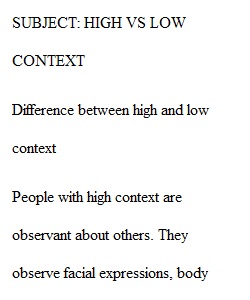


Q Instructions Organizational cultures and national cultures are two distinct types of culture. While they are distinct in many ways, they also play important parts in communication and decision-making. In this analysis, you will explain Hofstede’s six dimensions of organizational cultures and draw connections between these cultures and the distinct characteristics of national cultures. While drawing connections between cultures, be sure to provide examples to elaborate your points. Six dimensions of organizational culture are: Process-oriented versus results-oriented Job-oriented versus employee-oriented Professional versus parochial Open systems versus closed systems Tightly controlled versus loosely controlled Pragmatic versus normative You can use the following resources for reference:
View Related Questions